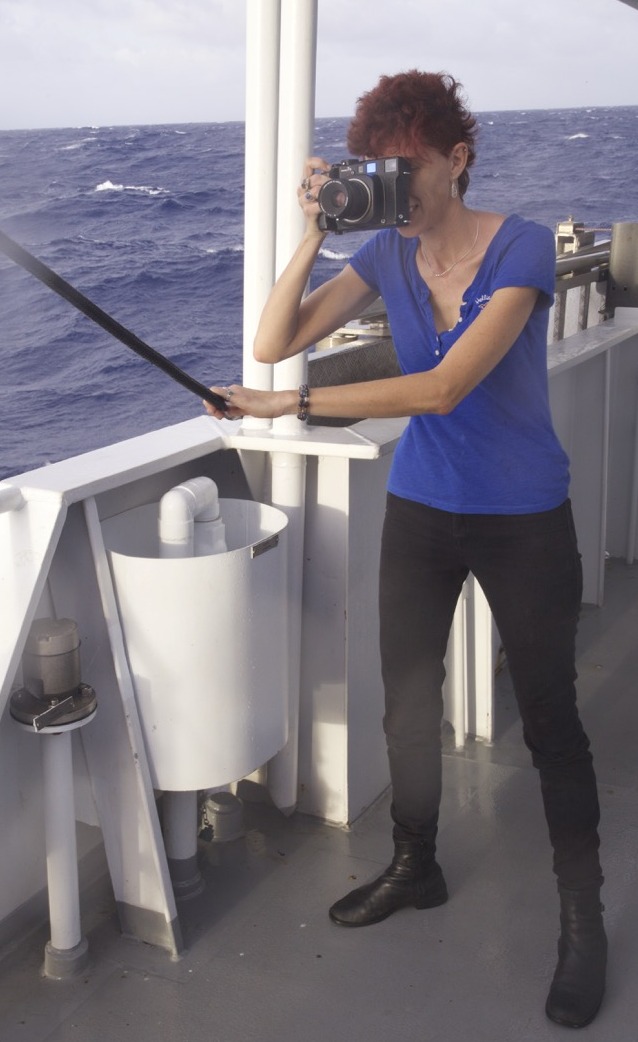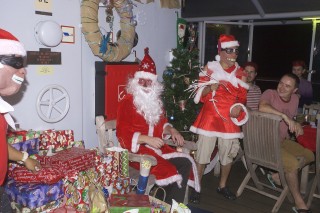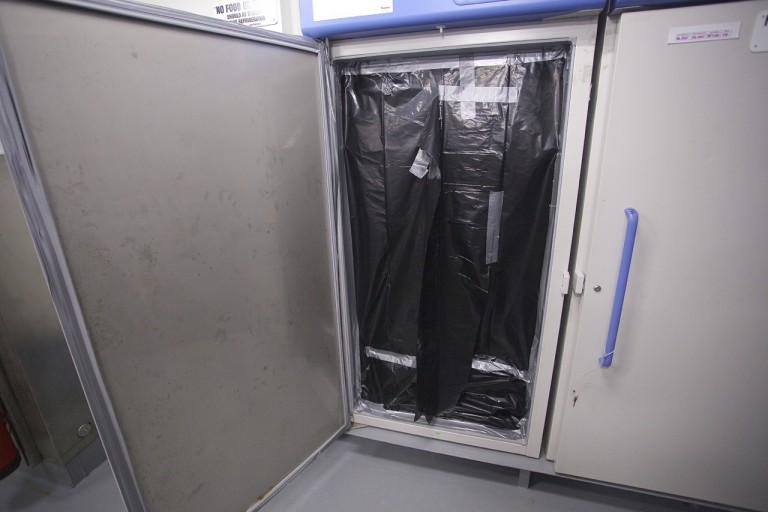I have been on Falkor for a few days now and got the rhythm of life on board down. I spent the morning photographing work on deck, taking water samples, and preparing the pH data. I was able to connect with my family for the holidays and give them a video tour ofFalkor, which they loved. It still amazes me that I can connect to them from out in the middle of the Pacific.

Christmas on board

The Falkor crew really knew how to make the holidays memorable! They hail from all over the globe, including Germany, United States, Ireland, England, Estonia, the Philippines, Scotland, and I am sure that I leaving out some countries here. The entire ship was a flurry of activity all day preparing. We enjoyed traditional U.K. festivities, which were brand new to me, like Christmas crackers and heavenly minced pies. However, this year the major theme was Estonian, and Santa had a wicked side. He demanded a performance, song, or poem from each of us before giving out presents. Our purser Adriana, and the chefs had written an original song and kindly let me join in. I was given an official Falkor shirt. The seas were blessedly calm for us, and all in all it was an unforgettable and inspiring Christmas Eve at sea!

I went up to the bridge on the evening of Christmas day and was treated to a lesson in Celestial Navigation by third officer Erik. Every evening he gives lessons in this ancient method of navigating, which involves making intricate drawings and calculations. The full moon on the ocean, and the red lights of the bridge set a fitting mood for the celestial lessons. Turns out there has not been another full moon on Christmas since 1977, which was coincidentally the year of my birth!
Light-proofing
After all of the festivities, I was finally ready to prepare the wet lab for the first round of film. Light proofing proved more challenging than expected. Light has a way of penetrating the tiniest cracks, and often the leaks are invisible until the rods in your eyes fully activate after about thirty minutes in the pitch dark. Contractor grade trash bags proved abundant and thick enough to block out most light, but just when I thought it was perfect, I noticed more leaks from under the door and through the walls. I decided to use a lab fridge for soaking and drying the film to block more light, but needed to check to be absolutely sure it was 100% lightproof. Glad I took the time to check because the fridge did have a light leak that would have ruined the film. I decided to line the entire fridge with more black bags and cover the outside of it as well. Finally the space was ready, and I put the first batch of film into the warm collected seawater. Each roll had to be in the specific water sample and clipped with a tag. As an added challenge, the sea was the roughest it has been since we left Guam. Somehow I managed not to spill any water working in the dark.

Sharing stories
As part of the art process, I have also been conducting interviews with the crew. So far they have touched on their incredible experiences working with scientists and how much is left to discover about the marine environment. They also talk about the importance of the research that takes place on board in relation to ocean acidification, hypoxia, and the connectedness of events on land and under the waves. It is crucial that each roll of film I take, and the resulting images for display, be marked with exact location, time, and displayed with a small vial of seawater. This will emphasize the connection of the surface experience and location and the complex network of biological processes happening below the surface. TeZ’s PLASM also functions as a visualization of these unseen forces, and it will be stunning to see the hard numbers translated into biomorphic, undulating shapes and sounds.

